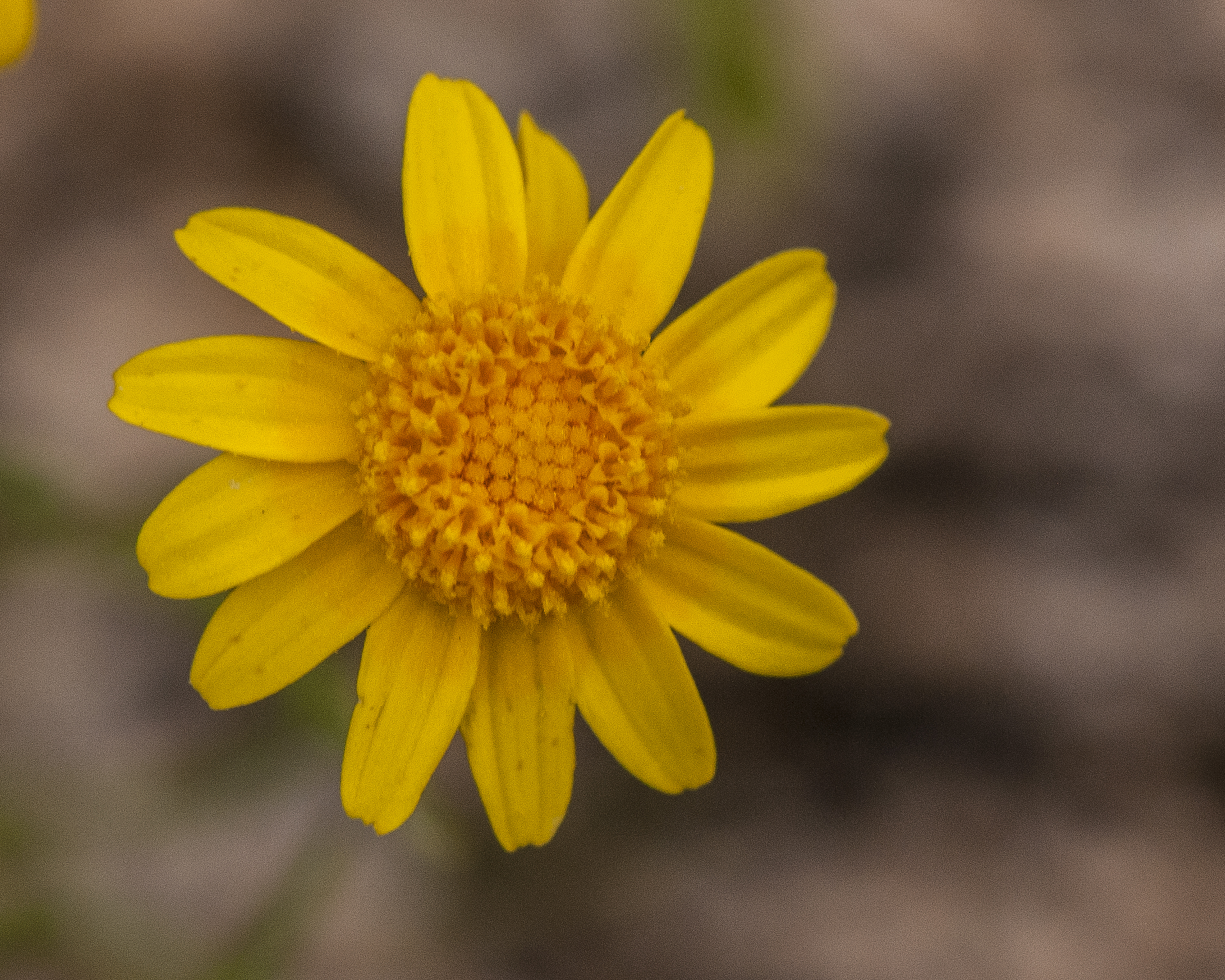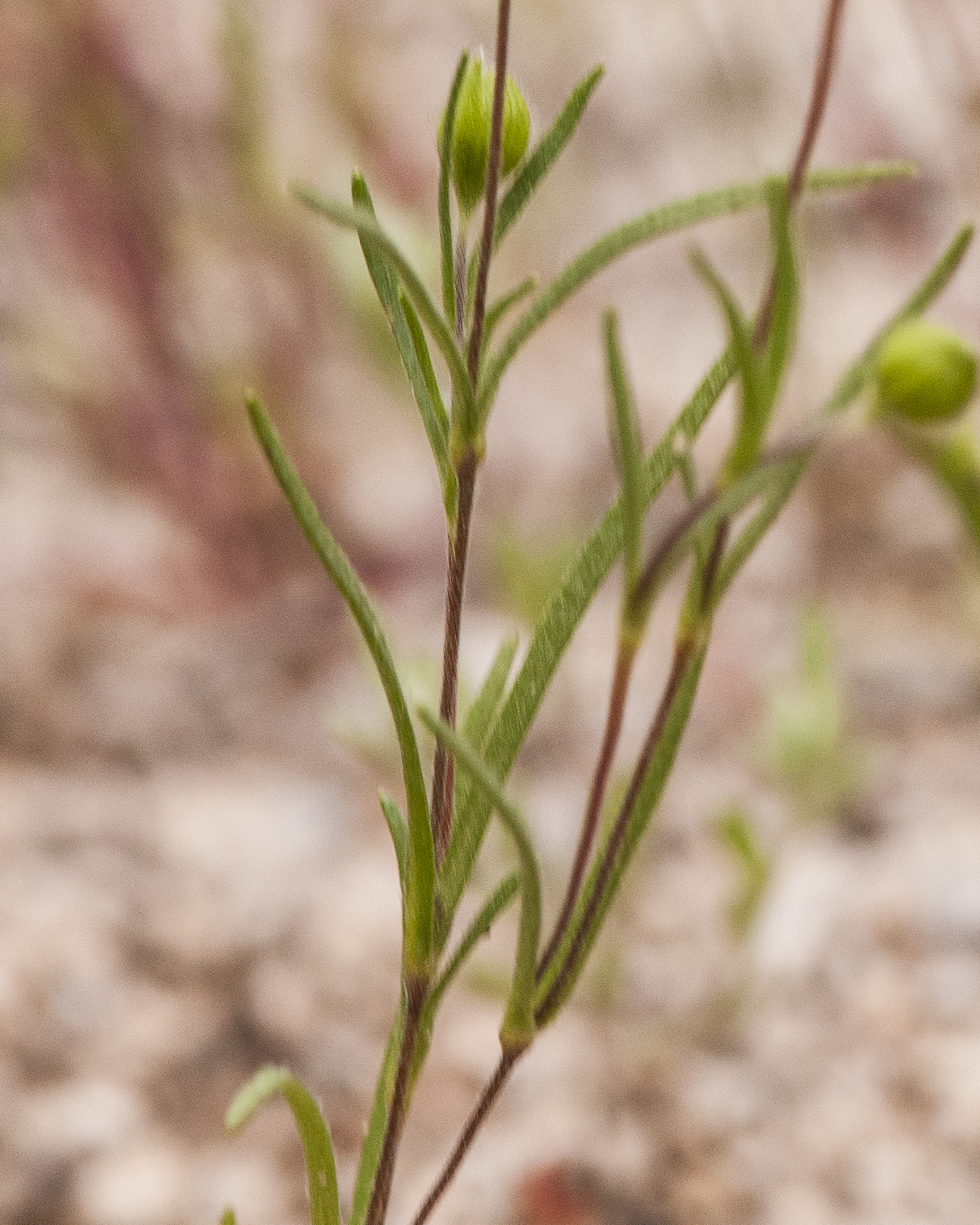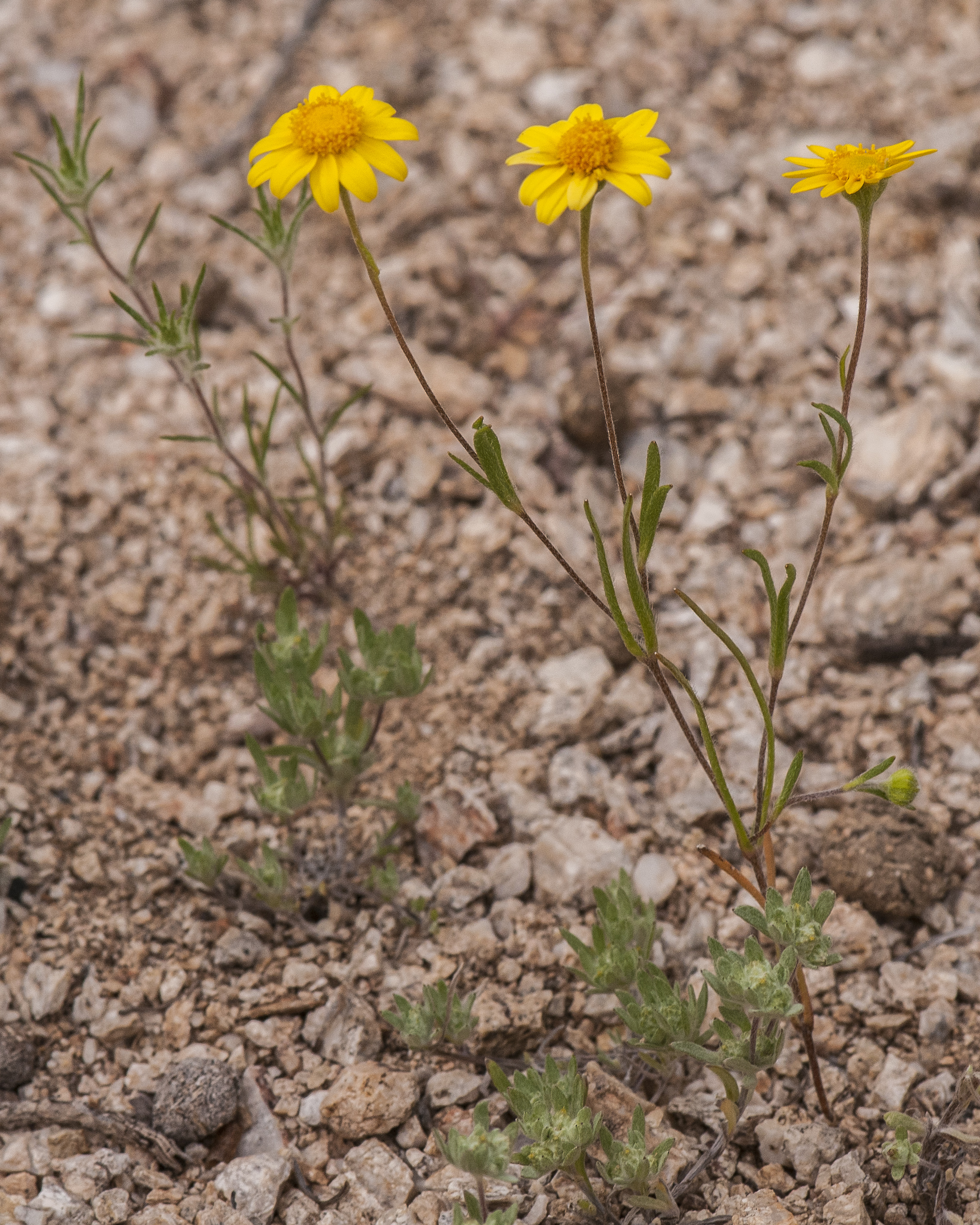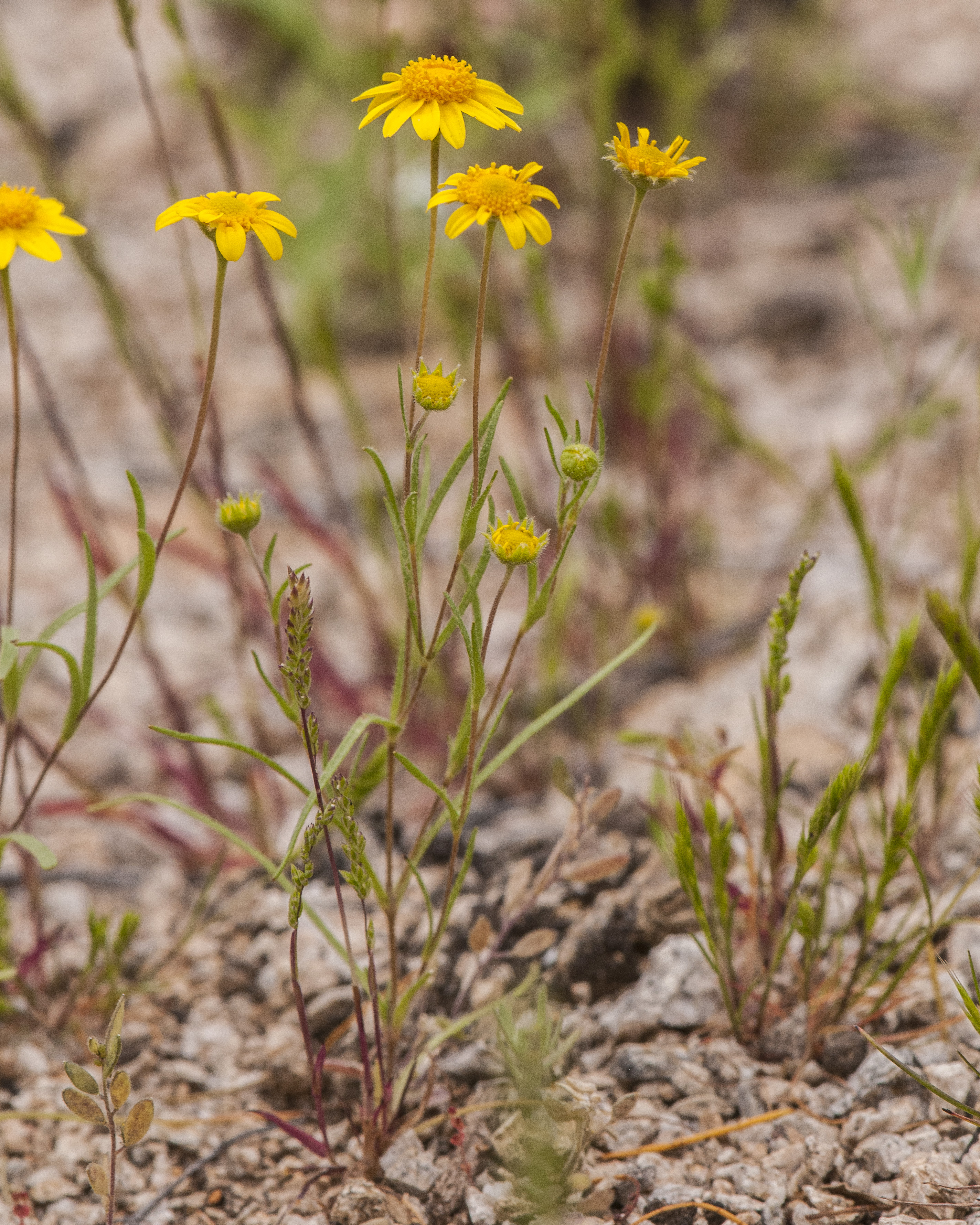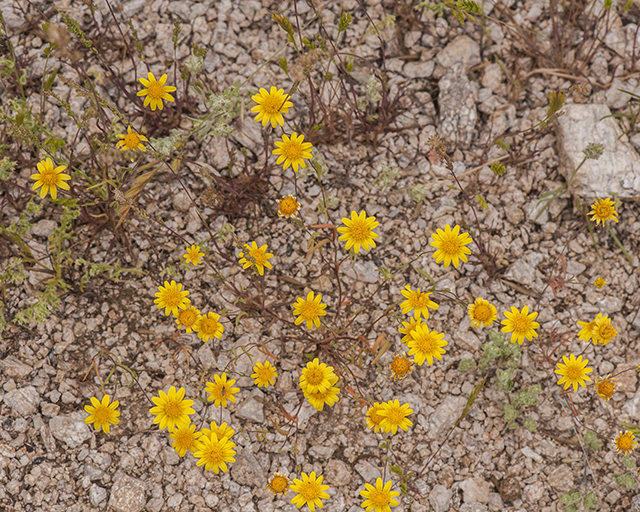Wildflowers of Southern Arizona
Needle Goldfields.
Lasthenia gracilis
Aster (Asteraceae) family.
Annuals, to 40 cm. Stems erect or decumbent, usually branched distally (sometimes proximally in desert forms), ± hairy (more so distally). Leaves linear to oblanceolate, 8-40(-70) × 1-3(-6) mm, (± fleshy in coastal forms) margins entire or with 3-5+ teeth, faces ± hairy. Involucres campanulate or hemispheric, 5-10 mm. Phyllaries (persistent or falling with cypselae) 4-13 (in 1 series), ovate-lanceolate to oblong, ± hairy. Receptacles conic, muricate, glabrous. Ray florets 6-13; laminae oblong, 5-10 mm. Anther appendages deltate. Cypselae black to gray, ± linear, to 3 mm, glabrous or hairy; pappi usually of (2-)4(-6) opaque, white (aging to brown), ovate-lanceolate, aristate scales, sometimes 0. Flowering Feb-Jun. Mostly open sites (virtually all habitats); 0-1500 m; Ariz., Calif.; Mexico (Baja California, Sonora). D. D. Keck (1959c) said of Lasthenia gracilis (as Baeria chrysostoma subsp. gracilis), 'The most abundant composite in the state [of California].' It is widespread throughout California, central Arizona, the Channel Islands, Guadalupe Island, and Baja California. It is variable and is sometimes similar to L. californica subsp. californica, from which it differs in its opaque, white, ovate-lanceolate, aristate pappus scales. Coastal forms of L. gracilis tend to have shorter, wider, fleshy leaves. Lasthenia gracilis often occurs with other Lasthenia species.
Santa Catalina Mountains
Sabino Canyon Recreation Area
Location: North of overflow parking lot beside unnamed trail
3/27/19
See SEINet Pictures and Description


